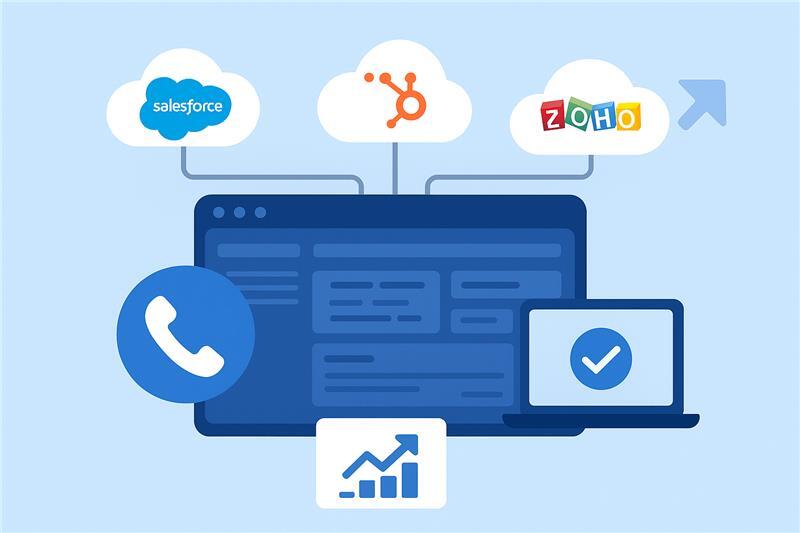
Why AI Sales Forecasting Tools Are Essential for Enterprise-Level Sales Strategies
Introduction to AI Sales Forecasting Tools
Accurate sales forecasting is the cornerstone of effective enterprise sales strategies. Modern organizations are increasingly adopting AI sales forecasting tools to improve accuracy, gain actionable insights, and make data-driven decisions. By leveraging machine learning algorithms and predictive analytics, these tools are transforming the way enterprises forecast revenue and plan sales activities.
What is an AI Sales Forecasting Tool?
AI sales forecasting tools are advanced software solutions that analyze historical sales data, CRM inputs, and external factors to predict future sales trends. These tools utilize AI models to identify patterns, detect anomalies, and provide actionable insights for sales leaders.
Key Benefits of AI-Powered Sales Forecasting Tools
1. Enhanced Forecast Accuracy
AI algorithms analyze vast datasets from multiple sources, reducing human error and improving forecast precision. Machine learning models continuously learn from new data to refine predictions over time.
2. Real-Time Insights for Decision Making
AI tools provide real-time insights into deal progress, sales velocity, and pipeline risks. This helps sales managers proactively address potential bottlenecks and course-correct strategies.
3. Improved Sales Planning
With data-driven insights, organizations can allocate resources effectively, manage inventory efficiently, and optimize staffing plans to meet predicted demand.
4. Risk Mitigation
By identifying deal vulnerabilities and predicting potential revenue gaps, AI sales forecasting tools empower sales leaders to mitigate risks and develop contingency plans.
5. Increased Revenue Growth
AI tools highlight high-probability leads, ensuring sales reps prioritize efforts where conversion likelihood is greatest, ultimately boosting revenue outcomes.
Key Features to Look for in AI Sales Forecasting Software
1. Predictive Analytics
AI-driven predictive analytics helps identify trends, customer behaviors, and seasonal patterns to enhance forecast accuracy.
2. CRM Integration
Seamless integration with popular CRM platforms like Salesforce, HubSpot, or Microsoft Dynamics is crucial for centralizing data and automating sales tracking.
3. Customizable Forecast Models
Flexible modeling allows enterprises to tailor AI algorithms based on their unique sales cycles, industry trends, and customer behaviors.
4. Data Visualization Tools
Clear visual dashboards enable sales leaders to track KPIs, pipeline health, and performance trends effectively.
5. Collaboration Features
AI sales forecasting tools with built-in collaboration features allow sales teams to align their strategies, ensuring all stakeholders have access to updated forecasts and actionable insights.
How AI Sales Forecasting Tools Improve Enterprise Sales Strategies
1. Improved Pipeline Management
AI tools analyze deal movement, helping sales leaders identify stalled deals, understand blockers, and prioritize high-value opportunities.
2. Dynamic Lead Scoring
AI assigns lead scores based on customer engagement, intent signals, and buying behavior, allowing reps to prioritize the most promising leads.
3. Personalized Coaching for Sales Teams
AI tools analyze individual rep performance, identify skill gaps, and recommend personalized coaching strategies to improve win rates.
4. Accurate Territory Planning
With AI-driven insights, enterprises can define sales territories more strategically, ensuring balanced workloads and improved resource allocation.
5. Scenario Planning and Forecast Simulations
Advanced tools enable sales leaders to create "what-if" scenarios, testing different variables to predict outcomes and prepare for future uncertainties.
AI Sales Forecasting Process

Implementing an AI Sales Forecasting Tool in Your Enterprise
1. Assess Your Current Sales Process
Evaluate existing sales data sources, CRM tools, and forecasting methods to identify areas for AI integration.
2. Choose the Right AI Sales Forecasting Software
Prioritize tools that align with your business goals, integrate with existing systems, and offer user-friendly dashboards.
3. Ensure Data Hygiene
AI models thrive on clean, accurate data. Regularly update CRM entries, remove duplicate records, and verify customer information.
4. Train Sales Teams
Provide comprehensive training to ensure sales teams can interpret AI-generated insights and incorporate them into decision-making.
5. Monitor and Optimize
Continuously track performance metrics, identify areas for improvement, and fine-tune the AI model to enhance accuracy.
Conclusion
AI sales forecasting tools are no longer optional for enterprise-level sales strategies—they are essential for ensuring accurate predictions, improving sales outcomes, and driving consistent revenue growth.
AI sales forecasting tools are no longer optional for enterprise-level sales strategies—they are essential for ensuring accurate predictions, improving sales outcomes, and driving consistent revenue growth.
Salesken’s Sales AI Forecasting tool provides clear pipeline visibility, accurate deal closure probability, and data-backed strategic decision-making. What makes it one of the best solutions in the market is its ability to leverage the BANT (Budget, Authority, Need, and Timeline) qualification method for precise deal predictability. With Salesken, sales teams can confidently forecast revenue, optimize sales strategies, and stay ahead of market trends.
Ready to supercharge your sales forecasting? Discover how Salesken’s AI-powered insights can transform your sales strategy today! Book a Demo Now.

.png)

